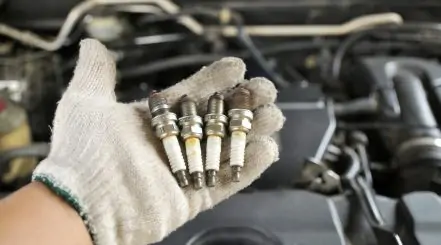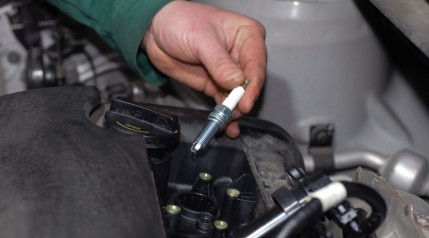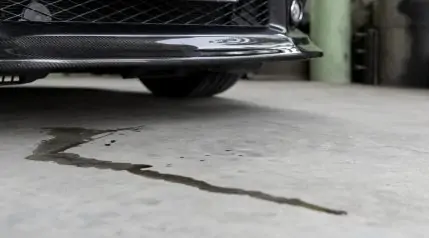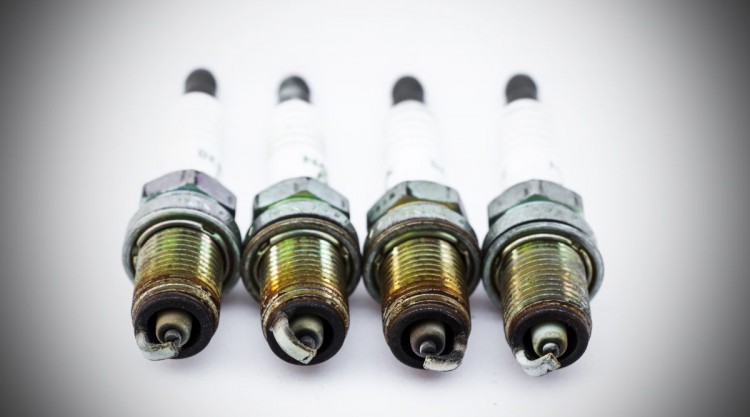
A vehicle’s engine has so many moving parts that it’s amazing they can all work together to produce the result they do.
Most of those moving parts are lubricated by oil, which reduces friction between the parts to prevent overheating and consequent damage to the engine. That said, there are certain places oil is supposed to be and certain places it isn’t – one of which is on the spark plugs.
Spark plugs are essential for the combustion of the gasoline and air mixture that makes your engine run. The combustion chamber itself is sealed from the oil that lubricates the engine’s moving parts. This being so, if you happen to find oil on a spark plug itself, it’s a sure sign that something isn’t right.
In this post, we take a look at why this is the case, what happens when oil is leaking onto the spark plugs, when you can fix it yourself, and when it’s time to have your vehicle seen by a professional.
Key Takeaways
Many Potential Causes – The most common causes of this spark plug issue are a bad valve cover gasket, leaking o-ring seal, faulty valve guides or valve guide seals, damaged piston guides, a blown head gasket, and a cracked piston.
Sure Signs – When this issue occurs, you might experience rough idling, engine misfires, a decrease in fuel efficiency, backfiring, and reduced performance, or see blue smoke from the exhaust.
Good News! – In most cases, repairs for this problem are fairly straightforward and can often be done at home.
What Happens When Oil Leaks Onto the Spark Plug?
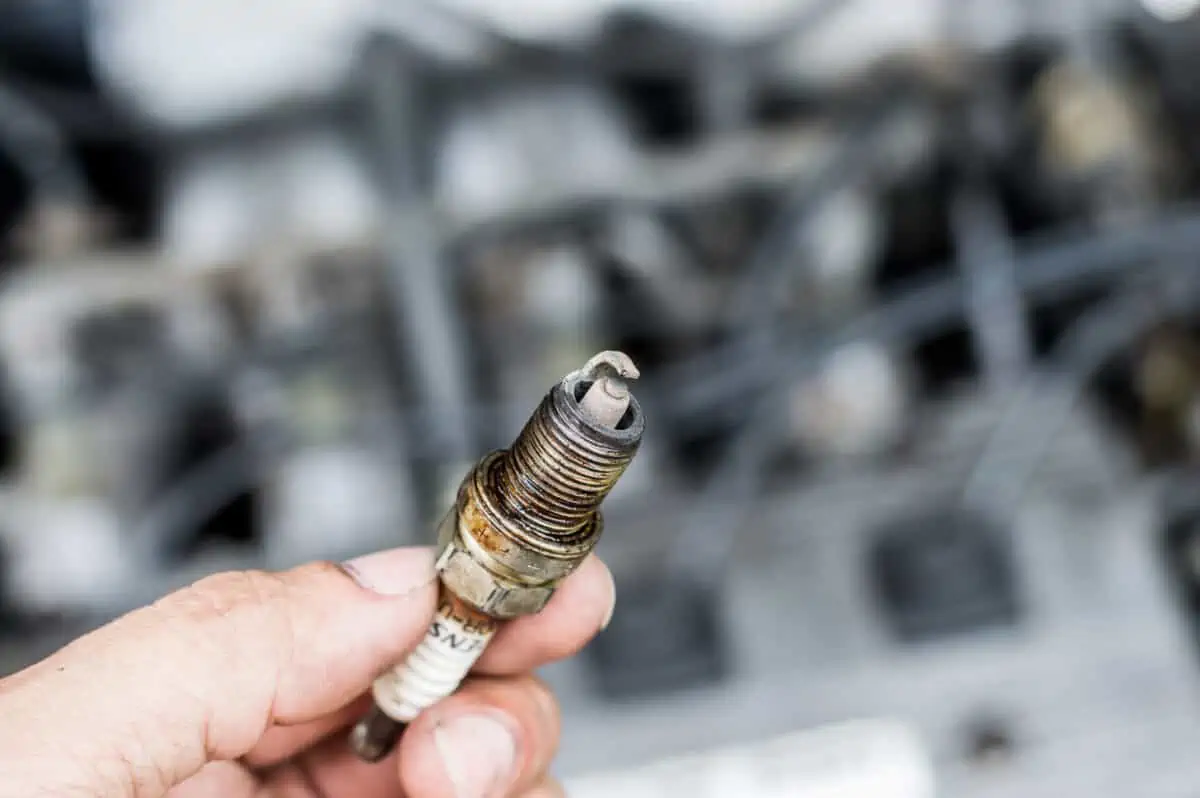
In addition to drawing heat out of the combustion chamber, a spark plug creates an electric current between a ground electrode and a center electrode. This current, which is similar to a miniature lightning strike, is what actually ignites the air-fuel mixture within the combustion chamber to make an engine run.
When oil leaks onto the spark plug, the current can be disrupted, causing either inefficient firing of the engine (referred to as a misfire), or no current to be generated at all.
At the very least, an engine with a misfire or clogged spark plugs will be far less efficient than it should be.
In not the most serious of cases, your engine may not perform as well, feeling sluggish when you press the accelerator. In worst-case scenarios, it may not run at all, or may even become a fire hazard.
What Could Cause Oil to Leak Onto the Spark Plug?
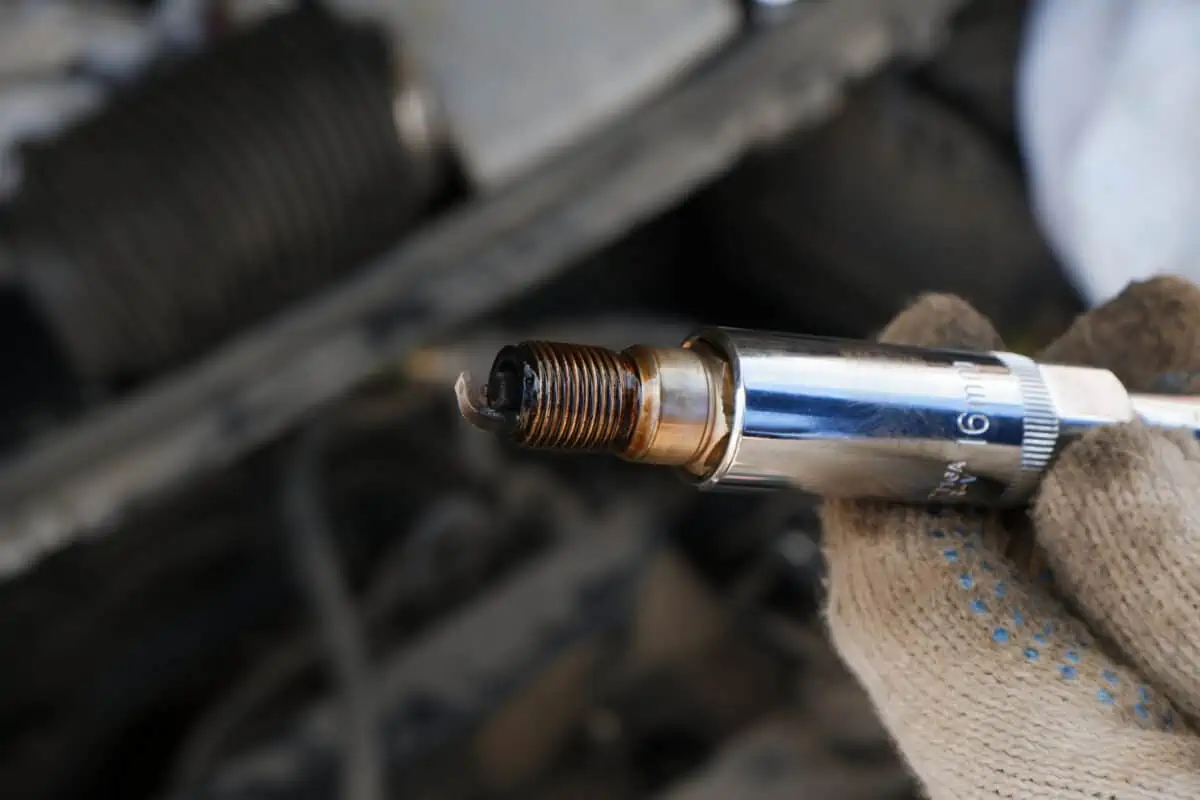
The most common reason for oil leaking onto the spark plug is a gasket or seal that has worn out.
In most cases, this is due to simple age along with wear and tear on the engine. Even when an engine is well-maintained, there will be parts that will need to be replaced, and seals are often the first things to go.
Even though seals are often the main culprit, if oil is leaking onto the spark plug threads or spark plug wells, it may also be a sign of a more serious problem.
It’s very important to understand all the possible causes of an oil leak so you can correct the issue quickly and prevent any engine damage.
Leaking Valve Cover Gasket
One of the more common issues causing this problem is a failed valve cover gasket.
This gasket prevents oil from leaking into the engine, but just like most other seals and gaskets, it won’t last forever. These are often made of silicone or rubber and will eventually wear out due to heat, oil erosion, or age.
This isn’t usually a large or costly fix, usually costing anywhere between $50 and $400 depending on if you are able to do it yourself or if you need to take the vehicle to a mechanic. Turbocharged vehicles often fall at the higher end of this repair due to additional parts.
Leaking Spark Plug O-Ring Seal
O-Ring seals go hand in hand with valve cover gasket failures, as spark plugs are located in tubes found within the valve cover. Each spark plug well is sealed and tends to be the other common failure point causing oil to leak onto the spark plugs.
These seals are similar to tires. When you open the valve cover to get to the o-rings, you will probably have to pry it open as the gasket’s job is to seal the compartment tightly to prevent oil entering. As a result, replacing both the o-rings and valve cover gasket at the same time is most likely in order.
Leaking or Worn Valve Guides
In most modern cars with gasoline engines, the spark plugs are located at the top of the combustion chamber between the intake and exhaust valves. These valves are timed to slide up and down to allow air to enter the combustion chamber and exhaust to exit.
The valve guides keep the valves in place as they slide open and closed, but these too can wear out due to heat, friction, and age. As this happens, oil can be pumped into the combustion chamber or may collect on and around the spark plug head.
This problem’s fix is usually a more complicated and pricey fix than a valve cover or o-ring gasket replacement.
Damaged Piston Rings

Each piston has a set of two rings that surround it and seal the combustion chamber. If one or both of these rings break or fail, engine oil can no longer be kept out of the chamber and could end up reaching the spark plugs.
Piston rings also aid in scraping or “washing” the sides of the combustion chamber from any excess oil from the engine.
This problem is one of the more serious issues, and is much more serious than a simple gasket replacement repair.
Cracked Piston
One of the worst-case scenario issues accompanying oil on a spark plug is a cracked or broken piston.
A hole in a piston will allow oil to seep into the combustion chamber and will most likely require an engine overhaul to fix.
Blown Head Gasket
Another serious problem that could cause an oil leakage is a blown head gasket.
The head gasket seals the cylinder head to the engine block, forming the top of the combustion chamber. Oil can enter inside through breaks in this seal and often requires hundreds, if not thousands of dollars to repair.
Oil found on the plugs or in the spark plug holes is rarely a sign of this, but it could be an early indicator of a blown head gasket if none of the other issues have been proven to exist.
Though it still isn’t ideal, catching this earlier on is best, then using the best head gasket sealer you can find could save you from extensive engine damage.
How Can I Tell When Oil Leaks on the Spark Plug?
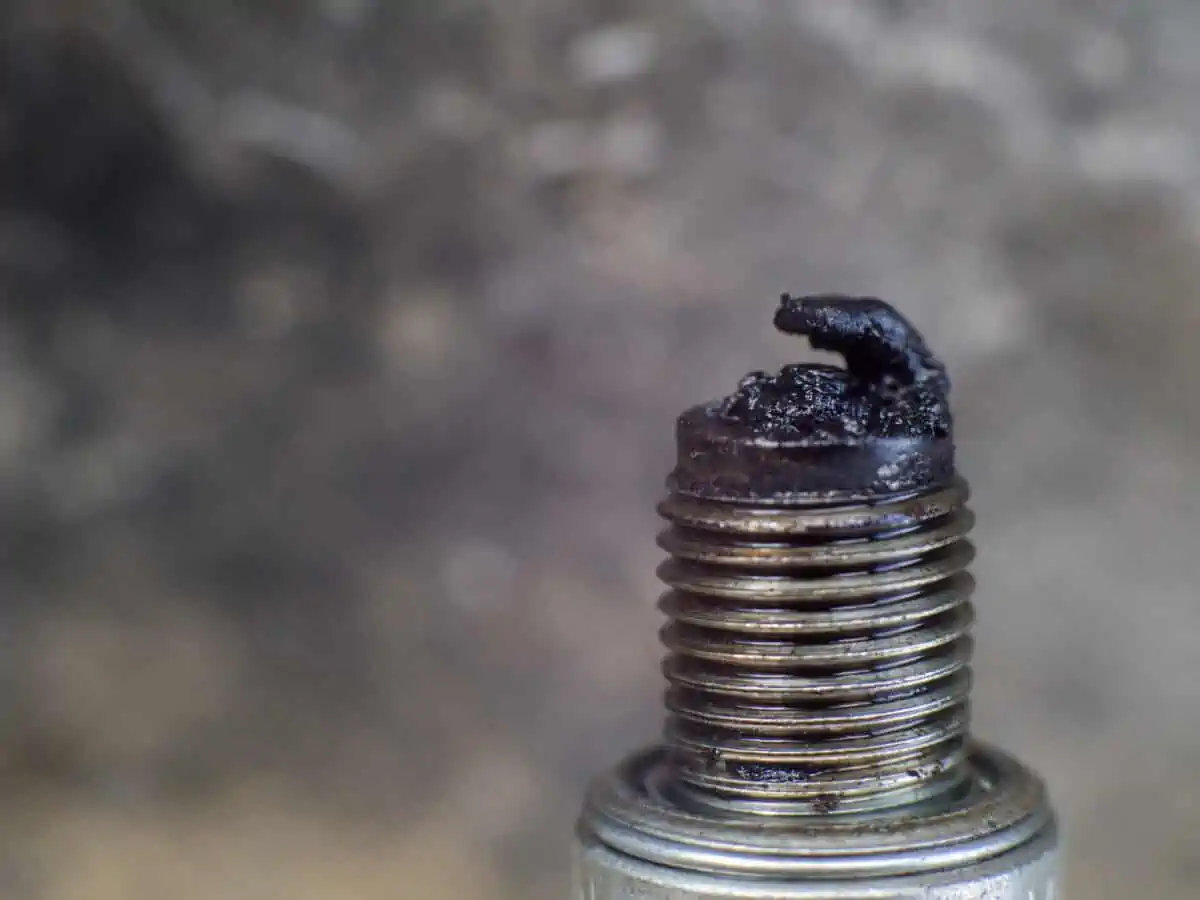
Checking the spark plugs and replacing them isn’t a terribly difficult maintenance job to complete, but it also isn’t as simple a task as checking your tire air pressure or oil level.
Fortunately, there are some telltale signs that there might be an oil leakage without having to open, disassemble, or pry anything apart.
Rough Idling or a “Lumpy” Engine
An engine that is having trouble idling or is surging can mean many things, but if oil is clogging the current needed for combustion, an engine won’t run correctly.
Engine Misfire
Engine misfires happen when combustion doesn’t occur in a cylinder for any number of reasons, including the lack of a spark caused by oil dripping onto a spark plug.
A misfire can be identified by a hesitation in the engine when power is requested. Sometimes you can even hear a misfire as a “pop” or “squeeze”, and it’s often accompanied by the smell of gasoline and oil. This can also produce black smoke from the exhaust pipe.
A Sizeable Decrease in Fuel Efficiency
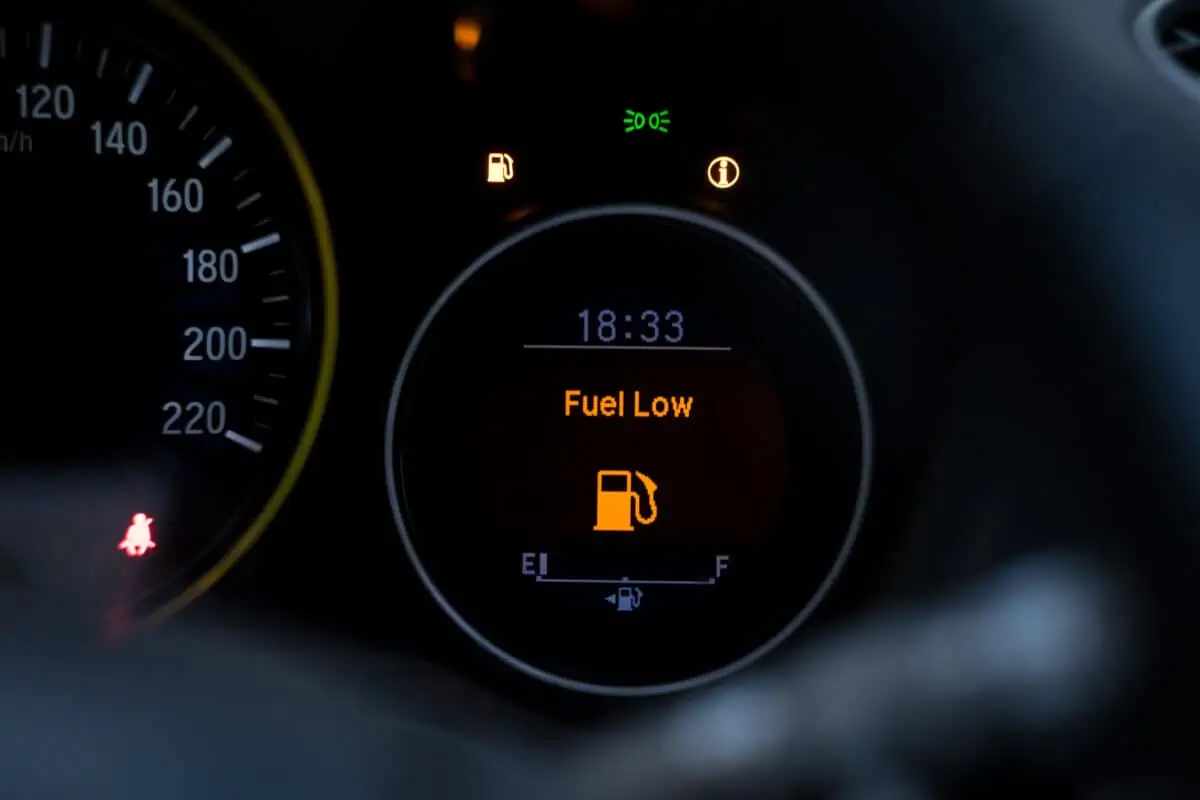
Even if there are no obvious signs of a rough idle or a misfire, fuel efficiency can suffer if the smallest factor in an engine is changed.
If oil is present on a spark plug, it will not be able to carry current efficiently. Consequently, gas mileage could drop.
A Decrease in Engine Performance
A misfire will quite often cause noticeable engine hesitancy, but even if a spark plug isn’t carrying current correctly to spark combustion, it won’t operate as it should. This ends up causing performance to suffer and the engine to struggle.
The Presence of Blue Smoke Coming From the Exhaust Pipe
Blue smoke is an indicator of burning oil.
If oil is leaking onto a spark plug tip in the combustion chamber of an engine, it will most likely burn with the air-fuel mixture when combustion occurs. This will produce blue smoke that can be seen in a vehicle’s exhaust.
The Presence of Backfiring
Engine backfiring is caused by unburned fuel entering the exhaust manifold which is hot enough to ignite it outside of the combustion chamber.
If oil is preventing the plugs from causing combustion, the exhaust heat could easily ignite unburned fuel as the pistons push it through the exhaust system.
How Can This Problem Be Fixed?
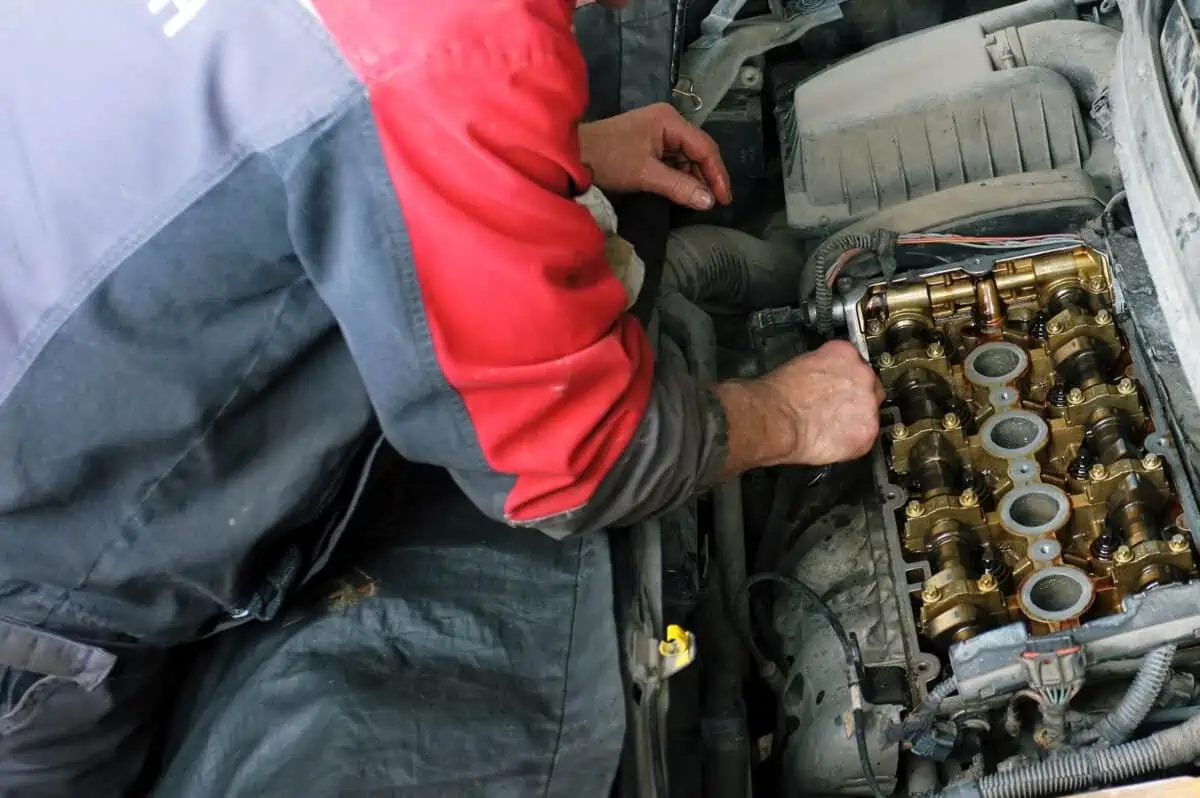
Thankfully, most cases of oil leaking onto a spark plug are a fairly straightforward repair and can often be done at home, especially if the oil is leaking due to a worn gasket.
Step #1: To replace the spark plug o-rings and/or a faulty valve cover gasket, you must first disconnect the battery and remove the wiring harness if it is in the way. Disconnecting the battery is crucial when working on most vehicle systems, especially anything having to do with the electrics and engine.
Step #2: You will then need to unscrew the valve cover, pry it off with a screwdriver, and remove the spark plugs and tubes. This will expose all of the applicable gaskets and seals that will need to be replaced. Replacement gaskets and o-ring seals can be purchased online and are fairly inexpensive.
Step #3: Once the old gaskets are removed, it’s always a good idea to use sealant before applying the new gaskets. This will ensure that everything is re-sealed properly.
Step #4: Simply replace the old gaskets, replace the valve cover, and secure the screws holding it in place. Remember to also plug the wiring harness back in and reconnect the battery.
If you are unsure about why there’s oil inside your spark plug well or aren’t comfortable dealing with the issue yourself, it may be best to consult a professional rather than attempt to fix things on your own. The same goes if you know that a worn valve cover gasket or o-ring gasket is not the issue.
Blown head gaskets, valve guide replacements and piston issues often require special tools and hours of labor. These are also indicative of major engine issues and require major overhauls, so it is best to have a professional mechanic perform the appropriate repairs.
How Can You Prevent Oil From Leaking Onto the Spark Plugs?

The best way to prevent oil from getting onto your spark plugs is to know your vehicle and learn about its weaknesses.
Also, understand that gaskets don’t last forever. These things will wear out. Replacing them at the necessary intervals will prevent issues before they start, and learning how to do these repairs by yourself will also save you valuable time and money.
There may not be one specific event that causes oil to leak onto the spark plugs of your vehicle. This being so, educating yourself about all the different possibilities discussed in this article so far – as well as taking preventative measures – will always go far in correcting issues before they happen.
Further Useful Information
Just because you find oil on your spark plugs, this doesn’t necessarily signal the destruction of your engine.
It is true that the problem could potentially be one that necessitates an engine overhaul. More times than not, however, failed valve cover gaskets and leaking o-rings are common problems with affordable repair costs.
Upon discovery of leaking oil onto your car’s spark plugs, you should take action immediately to fix the problem so that further issues don’t arise
Is Your Vehicle’s Engine a Diesel Engine?
It should also be noted that diesel engines are excluded from spark plug issues, though they do use something called glow plugs for cold starts.
Diesel engines function differently than gasoline ones as they use compression to heat the air-fuel mixture. Once the air is compressed enough, it is heated to the point that combustion occurs.
Is Your Vehicle Turbocharged?
If the vehicle you are driving is turbocharged, you may want to be a little more cautious about spark plug issues than you would with a normally aspirated engine.
Turbocharged vehicles are generally higher maintenance, as turbochargers put additional stress on many engine components.
Higher combustion chamber pressures, higher heat output, and additional crankcase pressure can all accelerate wear and tear, especially on gaskets and sealed areas of an engine.
Wrapping It Up
An oil leak on the spark plugs of a vehicle is rarely indicative of a major problem – however, it’s never a good idea to look past it when it happens. The key word here is rarely, not never.
Fortunately for you, the majority of the causes of these leaks will only ever require simple and inexpensive repairs.
Educating yourself about these issues and a little bit of preventative maintenance are the best ways to prevent oil leakage from ever happening in the first place.
Just remember that checking your plugs and the gaskets surrounding them should be part of your regular vehicle maintenance, even before you ever suspect that anything of this nature is going on.
They may not need to be checked as often as oil or tire pressure, but it is an often overlooked part of maintaining a vehicle that can go a long way toward ensuring its optimal health!

